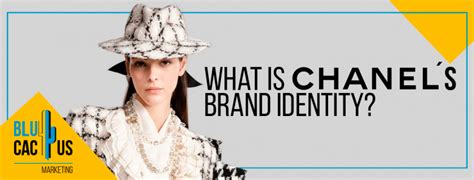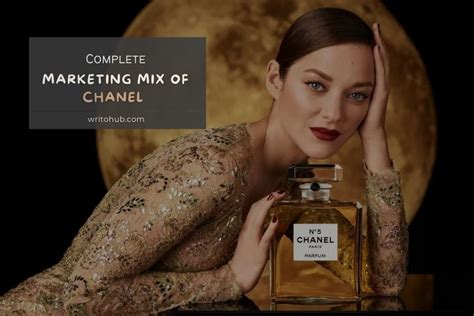chanel brand positioning | Chanel in marketing chanel brand positioning Chanel (because that’s the brand we are talking about) debuted in 23rd place as the second most valuable luxury fashion brand in the world. As a result, Gucci (no. 39) and . 1973 Omega Speedmaster 125 Reference 178002/3780801 - HODINKEE Shop. Why This Watch Matters The Speedmaster 125 celebrated Omega’s 125th anniversary in 1973 with its own caliber 1041, a Lemania-based chronometer certified automatic movement that can only be found in this model.
0 · what is Chanel brand
1 · Chanel in marketing
2 · Chanel fashion brand
3 · Chanel clothing company
4 · Chanel brand strategy
5 · Chanel brand positioning strategy
6 · Chanel brand positioning guide
7 · Chanel advertising strategy
NEW [WTS] (Price reduced for quick sale) 1984 Vintage Rolex Oyster Perpetual Datejust 36 yellow gold diamond indices ref. 16018 with box & papers Good Price $8,000

Chanel’s marketing strategy heavily relies on exclusivity and luxury positioning. The brand limits its product availability to maintain a sense of scarcity, which enhances its allure. . The company's positioning strategy is customer-based, giving more than what the customer needs. Besides producing great coffee, it promotes a good reputation to its target . For marketing professionals looking to glean insights from Chanel’s enduring success, understanding their approach offers a treasure trove of lessons on brand positioning, storytelling, exclusivity, and digital innovation. Overall, Chanel’s positioning as a symbol of elegance and luxury serves as a key component of its overall marketing strategy by establishing a strong emotional connection with its target audience and setting it apart from .
Chanel (because that’s the brand we are talking about) debuted in 23rd place as the second most valuable luxury fashion brand in the world. As a result, Gucci (no. 39) and . Chanel’s marketing strategy heavily relies on exclusivity and luxury positioning. The brand limits its product availability to maintain a sense of scarcity, which enhances its allure. Price points are set high, reflecting the quality and craftsmanship inherent in each piece. The company's positioning strategy is customer-based, giving more than what the customer needs. Besides producing great coffee, it promotes a good reputation to its target market through excellent store ambiance, environmental protection, and social commitment. Despite being 100 years old, Chanel manages to keep cementing its positioning as elegant and modern. Its logo’s crossing C’s are instantly recognizable. Its choice of celebrities continues to embody classic style with a unique personality; counting Penelope Cruz and Margot Robbie among its brand ambassadors.
For marketing professionals looking to glean insights from Chanel’s enduring success, understanding their approach offers a treasure trove of lessons on brand positioning, storytelling, exclusivity, and digital innovation. Overall, Chanel’s positioning as a symbol of elegance and luxury serves as a key component of its overall marketing strategy by establishing a strong emotional connection with its target audience and setting it apart from competitors in the crowded luxury fashion industry.
what is Chanel brand
Chanel (because that’s the brand we are talking about) debuted in 23rd place as the second most valuable luxury fashion brand in the world. As a result, Gucci (no. 39) and Hermès (no. 32), despite massive growth, held just the fourth and third positions respectively and Louis Vuitton (no. 18) was still the category winner.Analysis and examples of Chanel’s identity, positioning, key messages, tone of voice, brand archetypes, customer benefits, competitors, and marketing content. This article delves into the demographic and psychographic profiles of Chanel’s audience, explores the brand’s market segmentation strategies, and examines the role of digital media in reaching its market. Additionally, we will look at Chanel’s competitive positioning and future trends that may influence its target market. Key Takeaways One of the most valuable luxury fashion brands, Chanel, which “is a privately held company owned by Alain and Gerard Wertheimer” (Forbes 2017), operates world-wide with its different product categories such as, beauty, fashion and accessories, is going to be discussed in this case study.
By positioning itself as a high-end luxury brand, Chanel attracts a niche and affluent audience. The brand’s commitment to using only the finest materials and craftsmanship further enhances its reputation for exclusivity and quality. Chanel’s marketing strategy heavily relies on exclusivity and luxury positioning. The brand limits its product availability to maintain a sense of scarcity, which enhances its allure. Price points are set high, reflecting the quality and craftsmanship inherent in each piece.
The company's positioning strategy is customer-based, giving more than what the customer needs. Besides producing great coffee, it promotes a good reputation to its target market through excellent store ambiance, environmental protection, and social commitment. Despite being 100 years old, Chanel manages to keep cementing its positioning as elegant and modern. Its logo’s crossing C’s are instantly recognizable. Its choice of celebrities continues to embody classic style with a unique personality; counting Penelope Cruz and Margot Robbie among its brand ambassadors. For marketing professionals looking to glean insights from Chanel’s enduring success, understanding their approach offers a treasure trove of lessons on brand positioning, storytelling, exclusivity, and digital innovation.
Overall, Chanel’s positioning as a symbol of elegance and luxury serves as a key component of its overall marketing strategy by establishing a strong emotional connection with its target audience and setting it apart from competitors in the crowded luxury fashion industry. Chanel (because that’s the brand we are talking about) debuted in 23rd place as the second most valuable luxury fashion brand in the world. As a result, Gucci (no. 39) and Hermès (no. 32), despite massive growth, held just the fourth and third positions respectively and Louis Vuitton (no. 18) was still the category winner.Analysis and examples of Chanel’s identity, positioning, key messages, tone of voice, brand archetypes, customer benefits, competitors, and marketing content.
This article delves into the demographic and psychographic profiles of Chanel’s audience, explores the brand’s market segmentation strategies, and examines the role of digital media in reaching its market. Additionally, we will look at Chanel’s competitive positioning and future trends that may influence its target market. Key Takeaways One of the most valuable luxury fashion brands, Chanel, which “is a privately held company owned by Alain and Gerard Wertheimer” (Forbes 2017), operates world-wide with its different product categories such as, beauty, fashion and accessories, is going to be discussed in this case study.
Chanel in marketing

Chanel fashion brand
Chanel clothing company
$4,800.00
chanel brand positioning|Chanel in marketing


























